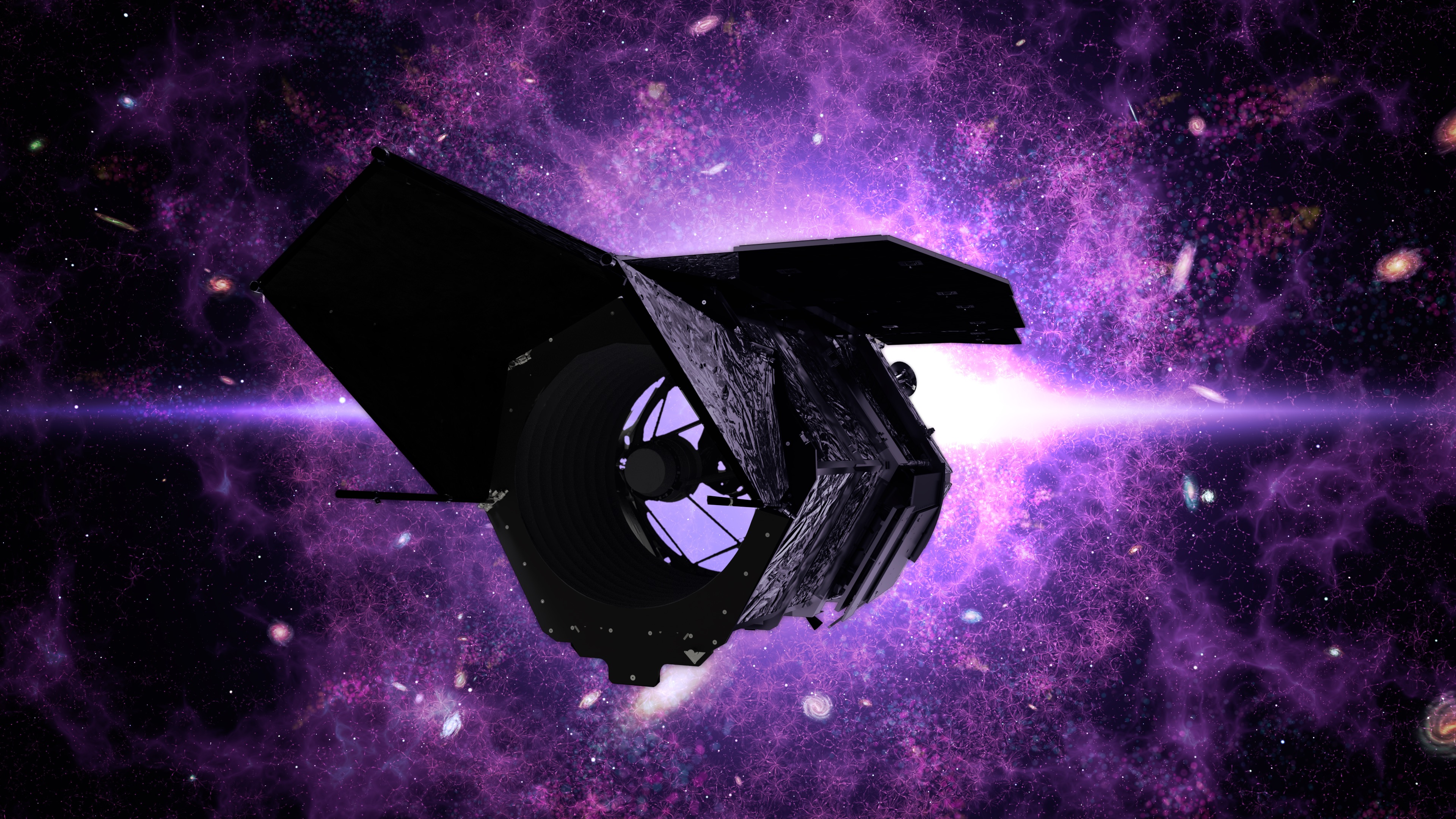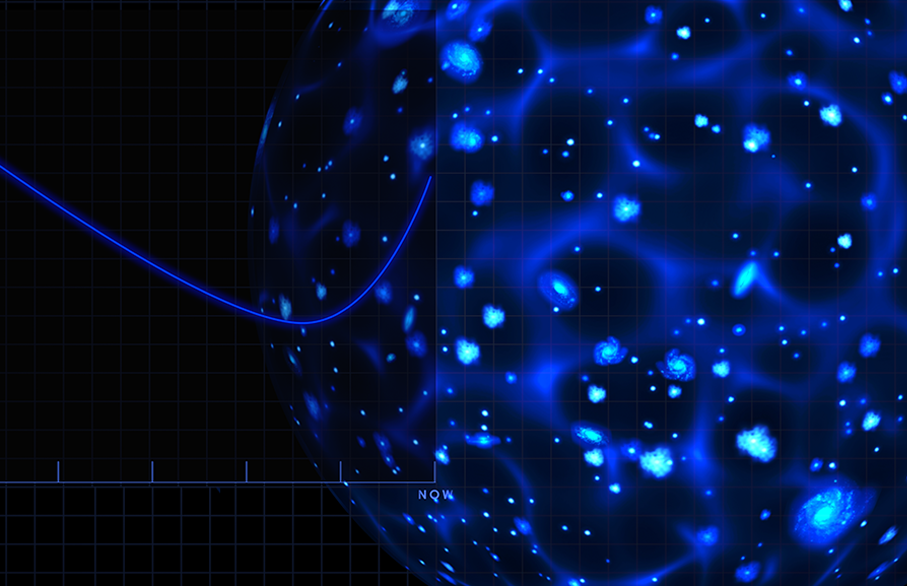Roman will detect vestiges of sound waves, called baryon acoustic oscillations (BAOs), that once rippled through the primordial cosmic sea. The mission’s observations could extend these measurements into an unprobed epoch, which will help astronomers trace the evolution of the universe.
For most of its first half-million years, the universe looked extremely different than it does today. Instead of being speckled with stars and galaxies, the cosmos was filled with a sea of plasma – charged particles – that formed a dense, almost uniform fluid. There were tiny fluctuations of about one part in 100,000.
What few variations there were took the form of slightly denser kernels of matter, like a single ounce of cinnamon sprinkled into about 13,000 cups of cookie dough. Since the clumps had more mass, their gravity attracted additional material.
It was so hot that particles couldn’t stick together when they collided – they just bounced off each other. Alternating between the pull of gravity and this repelling effect created waves of pressure – sound – that propagated through the plasma.
Over time, the universe cooled and particles combined to form neutral atoms. Because the particles stopped repelling each other, the waves ceased. Their traces, however, still linger, etched on the cosmos.
When atoms formed, the ripples essentially froze in place, carrying within them a bit more matter than the average across the universe. With the repulsive pressure of the plasma gone, gravity became the dominant force.
Over the course of hundreds of millions of years, clumps from the plasma that once filled the universe slurped up more material to become stars. Their mutual gravity pulled stars together into groups, ultimately forming the galaxies we see today. And slightly more galaxies formed along the ripples than elsewhere.
While the waves no longer propagated, the frozen ripples stretched as the universe expanded, increasing the distance between galaxies. By looking at how galaxies are spread out in different cosmic epochs, we can explore how the universe has expanded over time.
Scientists have noticed a pattern in the way galaxies cluster together from measurements of the nearby universe. For any galaxy today, we are more likely to find another galaxy about 500 million light-years away than slightly nearer or farther. But looking farther out into space, to earlier cosmic times, means that this distance – the vestige of the frozen BAO ripples – will decrease.
Roman will extend previous research by mapping the expansion of the universe to unprecedented detail. Studies show that Roman’s surveys will be able to probe for BAO remnants five times farther than originally planned, back to when the universe was only about 600 million years old – just 4% of its current age.
Learning more about the way the cosmos has expanded over time will allow scientists to explore dark energy – a mysterious pressure that is accelerating the expansion of the universe. Roman is optimized to survey the cosmos for BAO impressions across the middle of its current age because that’s when scientists think dark energy transitioned from being a minor contributor to the contents of the universe to the most dominant force.
But some theories hypothesize a bout of dark energy activity when the universe was much younger. Peering farther into the universe’s past will add pieces to the puzzle and help astronomers decipher how dark energy has shaped the cosmos over time.
The High Latitude Wide Area Survey will allow astronomers to see how the distribution of galaxies has changed, revealing how dark energy has evolved over cosmic time.
A key technique to study dark energy is a measurement called “redshift.” Because space itself is expanding, the farther we look, the faster galaxies are moving away from us. This results in a measurable shift in an object’s light toward redder colors. This redshift indicates how fast the expanding universe is carrying galaxies away from us. If we can also figure out a galaxy’s distance by other methods, we can use both pieces of information to measure how the universe expanded while the galaxy’s light was traveling to us. Roman will map out the positions and distances of millions of galaxies. This will allow astronomers to see how the distribution of galaxies has changed, revealing how dark energy has evolved over cosmic time.
NASA’s Roman Space Telescope to Uncover Echoes of the Universe’s Creation
NASA’s Nancy Grace Roman Space Telescope will detect vestiges of sound waves that once rippled through the primordial cosmic sea.…
Read the Story
Roman's Dark Energy
Roman will help illuminate the dark energy puzzle by using multiple methods to explore how the universe has evolved throughout cosmic history.
Find Out More

